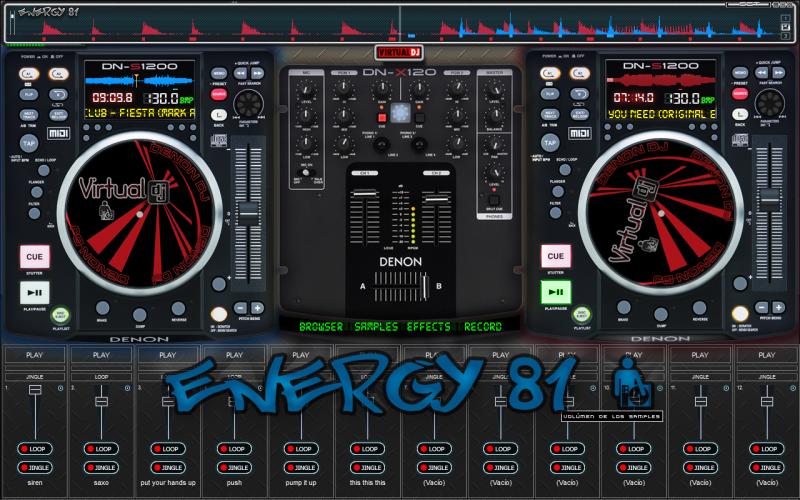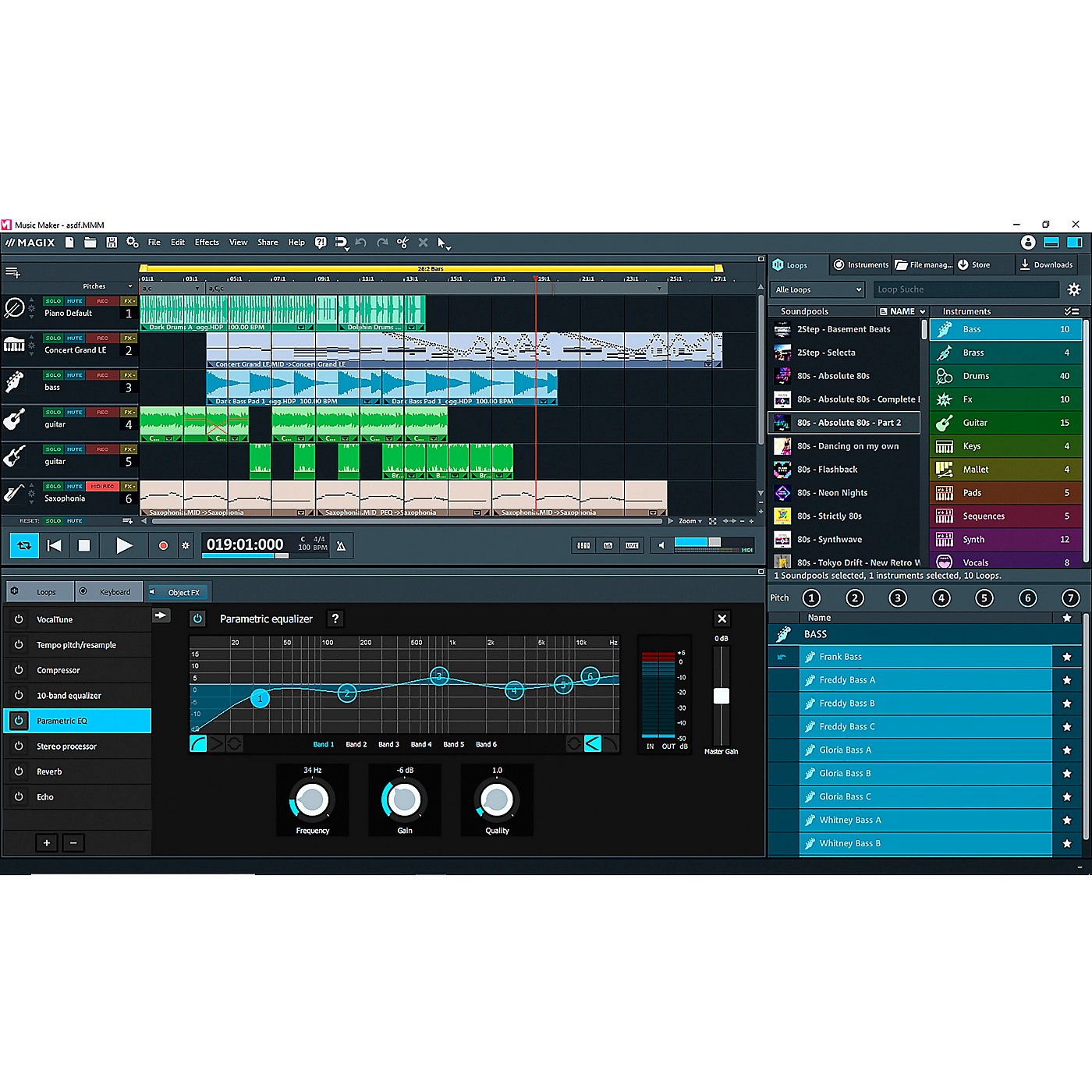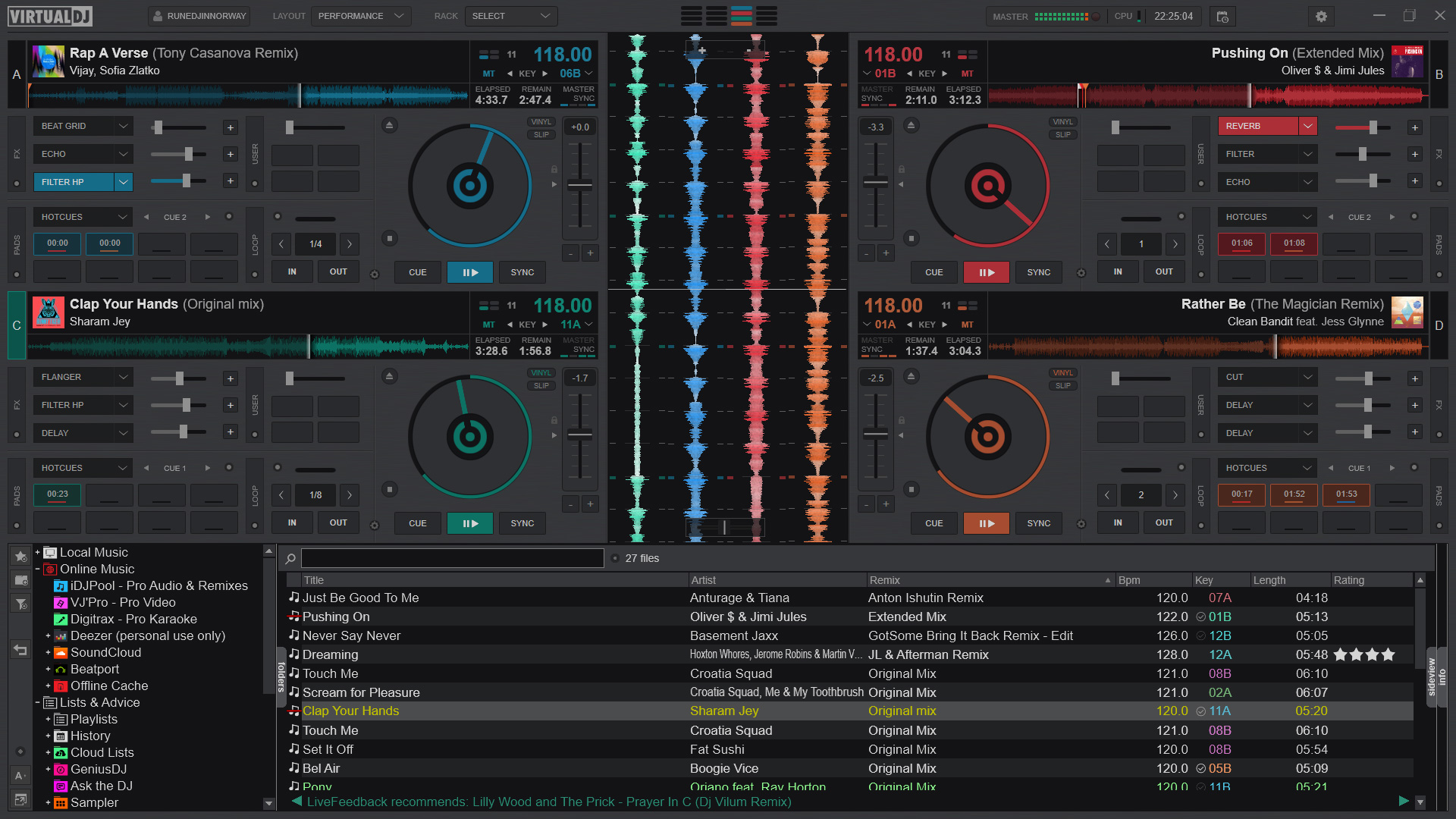

- Virtual dj home edition 2006 update#
- Virtual dj home edition 2006 skin#
- Virtual dj home edition 2006 professional#
Thankfully, cue points are saved in a master database so they load with tracks later on, which is essential for a professional package. Cues and loopingĬues are pretty simple to use in VDJ: in the cues panel, click the dot icon to write them and the arrow to jump to the cue point. The USB Quattro card I had worked fine for master and cue sound, but I didn't have a Windows-compatible midi console to test with VirtualDJ so I can't say much other than it seems to be very comprehensive as well. Hardware support in VirtualDJ is second to none, with presets for various options: split stereo ghetto mode, dual sound card, and pass-through options.

Quiet breaks, which are good times for mixing in the other track. The green area is currently playing and the darker portions show It also means you don't have to commit to extra sound hardware if you just want to do some decent mixing. The clean overlay of tracks in the waveform view and synchro start means that even without cueing with headphones, it's very easy to start a mix, which is good for people with no separate sound out and don't want to have to split a stereo signal just to do a beatmatch.
Virtual dj home edition 2006 update#
This persistent beatmatch also functions as a realtime master/slave setup so if you feel like speeding things up while in the mix, you don't have to constantly update it manually. You can right-click the beatmatch button and it will lock it on, automatically start shifting to be on beat after you click play or pause. Hit beatmatch, and the BPM is matched according to the analysis it makes when you load the track into the deck. You set the cued track by clicking either button above the gain knobs and then scrub back and forth to get to the first beat of your bar. The frequency display is tweaked to accentuate the beat, so it's pretty clear how the tracks should line up. The left and right tracks are overlaid on top of each other and a line in the middle shows where the current moment of the playing track is. Mixing and cueing is done by eyeing the waveform view at the top.

Toggle the monitor/cue interaction by clicking the number button This way, VDJ manages to get it all in without looking like a mech explosion. The bottom pane of VDJ itself has four panes for Music Library, Samples, FX, and Recording.

There is a lot of stuff jammed into VDJ's interface, but it's very well laid out: there are four panes for Remix (within that is one-click sample bank playback, filter toggles, beat jump, loop length and position control), Cues, EQ, and Video. The fake decks aren't just for show though: you can drag the record manually for winding quickly cueing and tapping the record works as the classic makeshift pitch bend with the waveform preview reacting accordingly.
Virtual dj home edition 2006 skin#
Anyway, I'm sure most people who want to try their hand at DJing will like the pseudo-physical aspect of VirtualDJ and it can be changed with a skin if you're not digging the way it looks. At first I found the virtual turntables of VDJ a bit cheesy, but I got used to them quickly and the toy-ish look became less of a problem once I started using the app. The sliders have a nice solid 3-D feel and the grey used in the default skin is a good match for the Technics SL1210 I have.


 0 kommentar(er)
0 kommentar(er)
